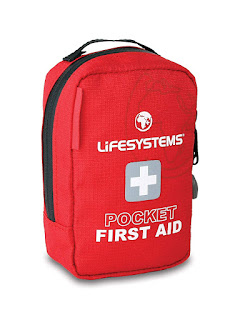A series of minor mistakes
 |
| Worth adding to your pack |
There are plenty of mountain rescue stories that ignite anger in the outdoor community; you know the ones, a person walked up a mountain wearing flip-flops in the snow with no map and this results in a bunch of amazing people having to put their lives at risk to rescue them. But for every story of lack of knowledge and preparation, there are many rescues that go out to well prepared, experienced people where something unexpected went wrong. These thoughts were at the forefront of my mind as I picked myself up off the ground having twisted my ankle on the walk home from my wild camp.
It happened on a path I have walked many times before, in an area I knew well, but I simply hadn’t spotted the hole on the edge of the path. My ankle twisted and the sudden pain caused me to lose balance and I fell. Fortunately, I rolled as I hit the ground so no other injury resulted and my kit remained undamaged. I immediately got up and began walking again before having to stop to let the worst of the pain subside. At this point I was thinking about my flat mobile phone in my bag, the result of a simple failing, I didn’t test the charger before I left. I’d charged it up, got the phone cable but it never occurred to me to check it could actually recharge the phone. I’d already managed to cut my hand and coupled with the rain and mud, I wasn’t feeling that cheerful.
A common trait I’ve noticed is that it’s not always the single big mistake you make, it’s the collection of small issues that collectively amount to a much bigger issue. Minor things can have a big impact when you're far from home, not fixing a puncture on your bike properly and using up all your patches and spares, not eating enough or eating something dodgy and getting ill. They all prevent you from making the most of your adventure and in some cases require a call for help.
In my case, I was fortunate that this was a minor setback, no major injuries and I was outside in the fresh air with the challenge of walking 5 miles home with a slightly dodgy ankle. As I tend to respond well to challenge this felt like a good adventure. I assessed the situation, the pain was passing, nothing was making horrible noises, my boots had saved me from a more serious injury, so carrying on was a good option. I mentally worked out the quickest way home, decided I didn’t need to get help and set off again. The journey home took longer than normal but felt fine once I got moving; the sun even decided to make an appearance and I was able to hang up my tent to dry when I got home. Although this small problem was not particularly eventful in its own right, it reminded me of that some lessons are worth revisiting so you don't become complacent.
I think there are two additional things I feel are worth mentioning. Firstly, what’s an adventure? Personally, I like Alastair Humphrey’s view of adventure and his microadventure concept: a microadventure is an adventure that is short, simple, local, cheap – yet still fun, exciting, challenging, refreshing and rewarding. I like these as they are generally easier to organise and therefore more likely to actually happen. If you’re not sure whether you had an adventure, then this flow chart is a pretty good validator: Did you have an adventure?
The second point is that I think you can go too light on your gear, people get obsessed with carrying as little as possible; leave the first aid kit, leave that emergency bivi, don’t pack that extra fleece. I’ve never needed them so why bother carrying them. Until that time you’re waiting for an ambulance to pick you up, and as you can see that doesn’t have to be miles from home, it can happen on your local trails. That’s when you’ll wish you packed that extra kit. However, it’s your choice and it’s a balancing act that only you can decide on.
Click on this link to buy a recommended first aid kit: Click Here
Click on this link to buy a recommended first aid kit: Click Here

Comments
Post a Comment